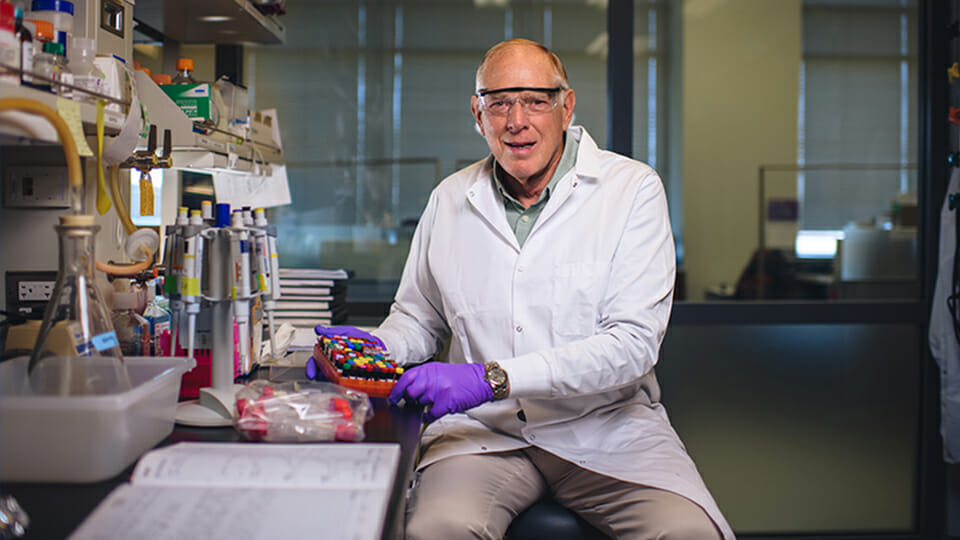Cancer imaging technology awarded additional FDA approval
Subscriber Benefit
As a subscriber you can listen to articles at work, in the car, or while you work out. Subscribe Now
The U.S. Food and Drug Administration has given additional approval to an imaging agent used to help find tumors in cancer patients, this time for individuals battling lung cancer. Cytalux was developed by Purdue University’s Dr. Philip Low, who is also founder and chief science officer for On Target Laboratories Inc. in West Lafayette. Cytalux, which was previously approved for use in ovarian cancer patients, uses a fluorescent dye to illuminate cancerous tissue, making it easier for surgeons to find and remove the tumors.
In an interview with the Associated Press, Low said Cytalux will be a great benefit to lung cancer patients.
“Lung cancer is the leading cause of cancer deaths among both men and women, and there are roughly 236,000 new lung cancer patients each year in the United States. So, it’s a major problem,” said Low. “What Cytalux does is it enables the surgeon to see these cancer lesions, these nodules, and to remove them.”
Low said to date, surgeons in clinical trials have been able to find additional cancer in almost two-thirds of patients who have been treated with Cytalux.
“This, obviously, means that these patients otherwise would have had residual cancer remaining in their bodies after surgery, and that could lead to death and other complications,” he said.
Low is the Ralph C. Corley Distinguished Professor of Chemistry in Purdue’s College of Science and also the university’s Presidential Scholar for Drug Discovery.
Purdue says Cytalux tags folate, a type of B vitamin that cancer cells use to divide rapidly, with the fluorescent dye, which ultimately gets attached to the cancer cells as well. These cells can then be seen under near-infrared light, making it easier for surgeons to find.
“Cancer cells have an enormous appetite for this vitamin, and we have exploited their greed for folic acid by attaching a fluorescent dye to it,” Low said. “The drug not only allows the surgeon to see the cancer but may also help surgeons avoid removing tissue. Being able to avoid cutting healthy tissue can be as important as removing unhealthy tissues.”
Only 7% of patients diagnosed with non-small cell lung cancer are expected to live another five years. Low said the only absolute cure for lung cancer is to surgically remove all malignant tissue out of the patient.
“Cytalux has significantly aided the surgeon in finding this diseased tissue so that this goal of removing all of the cancer tissue during surgery and avoiding the need for chemotherapy can hopefully eventually be achieved,” he said.
In clinical trials, surgeons were able to find otherwise undetected cancer tissue in 24% of lung cancer patients.
Low said Cytalux should be effective in enabling surgeons to see a number of other cancers, but there are some cancers for which the treatment won’t be useful.
“In those cases, we are in the process of developing other tumor-targeted fluorescent dyes that will illuminate these other tumors, so that eventually, our hope is that a small cocktail of a few of these tumor-targeted fluorescent dyes collectively will enable a surgeon to image and resect essentially any human cancer.”
In March, Low received FDA approval for a new precision treatment used on patients with advanced prostate cancer, which saw a 38% reduction in the risk of death when combined with the normal standard of care in a Phase III study.
The technology is being marketed through Switzerland-based Novartis Inc., which in 2018 acquired Low’s biopharmaceutical company Endocyte in a $2 billion deal.
In June, Purdue received an $8.5 million gift from the estate of Dr. John Capaldi, a former professor of psychological sciences who died in 2020, which was earmarked to support cancer research at Low’s lab.
Low said the gift will fund more than 40 years’ worth of research.
